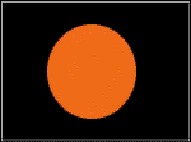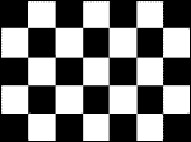Flags
These are the basic Flags that are in use at the tracks we run on with Pro Auto Sports/ASA. Please be aware of their use and meaning. These are displayed for your safety and the safety of others.
|
Yellow Flag Standing = Track is yellow, Slow Down, no passing in this section of track Waving = Incident just ahead, Slow Down, be observant and no passing in this section of track Double = Full course yellow. Slow Down, No passing anywhere Note: The first lap on track will be standing yellow. |
Green Flag Command Flag |
Blue Flag Advisory Flag See below for a video demonstrating why you should not move over when being passed. |
|
Black Flag Command Flag |
Double Black Flags Command Flag |
Surface Flag Advisory Flag |
|
Mechanical Flag Command Flag |
White Flag Advisory Flag |
Checker Flag Command Flag |
Additional Yellow Flag Procedures:
Accidents are an unfortunate part of racing. We need to do all we can to avoid them but they happen nonetheless. How we handle the situation once it occurs can make the difference between a minor spinout and ambulance run. Below is a listing of processes and procedures that we need to observe and follow. Many of these actions need to happen at the same time and co-operation between all parties is essential.
When an Incident occurs.
Who looks.
• Safety Team Worker, Flagman, Race Director, Officials, Drivers, Spectators.
What everybody’s looking for.
• Karts stopped on track, kart stopped (blind), track is blocked, karts rolled over, karts impact each other, karts impact object, Driver on ground, Driver in distress.
What they do (the Safety Team Workers).
• Get it on the radio. “Kart stopped in turn XX, need yellow”
• Get the Yellow out if they’re that corner person.
• Get a better look, determine the severity.
• If required, call for a full course caution.
• Move in to render assistance if required.
• If required, call for race stoppage.
• If incident is minor, move kart to safe position, pick up after race.
What we (Drivers) do.
• Watch “up track” for incidents.
• If an incident occurs, get your arm up.
• Slow down, be aware of the karts behind you.
• Give the incident room, but don’t wreck avoiding it.
• Because you may be the closest person to the incident as you go by and if you can do so safely, look at the incident, if it looks serious make sure the next corner station or flagman is aware (wave you arm a lot).
• It is recommended that you do not stop, there are trained people for that.
• Look for Yellow flag, have your arm up.
• When you clear the incident, resume racing but be prepared for a full course yellow.
• If a Full Course Yellow is called, slow down (to about 30 mph) get your arm up.
• Unless you are the leader, catch up (gradually) to the kart in front of you.
• A slow moving pack makes it much easier for emergency crews to get around.
• Do not pass any other karts unless they wave you by – example a kart heading back to the pit with a flat.
• If the race is restarted, it will be a single file restart.
• If the pack is called in, pull up to a common area, shut off, and leave room for vehicles to get through.
If you are involved in the incident.
• Decide if it is safer to remain in the kart or get out.
• It may be best to wait for the pack to go by.
• Get yourself to safety first.
• Look for a worker and relay how you are (Hurt, OK, Need Help, etc…)
• Workers will be looking at you to decide their next course of action.
• If your kart can restart and you can rejoin safely, look to the Safety Team Workers for direction.
• If it won’t restart and it is safe to do so, remove it to a safe location.
• When help arrives, do what they say.
• Karts will be returned to the pits at the end of the race.
Why the Passing Kart is Responsible for a Safe Pass:
Imagine what would have happened if the overtaken car had moved right to allow Shumi additional room to pass by on left?
|
[youtube:http://www.youtube.com/watch?v=LyROseZgtVg 320 240] Mika’s pass on Schumi: Spa 2000 |
Mika was completely unsighted and the resulting wreck would probably have been catastrophic.
Remember – the passing kart is responsible for making a safe pass.







